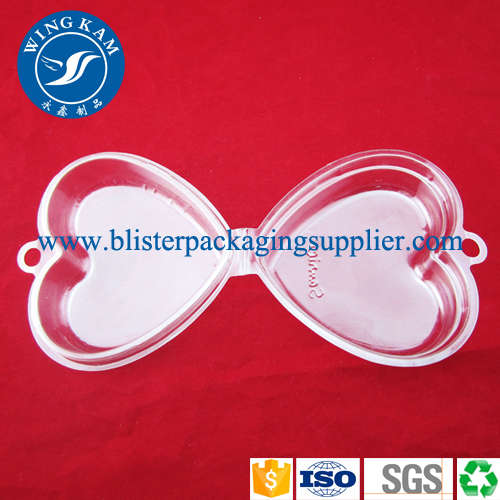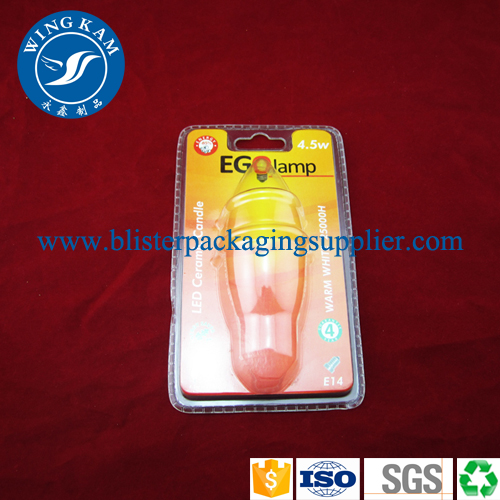First, the composition of paper. Paper is made from pulp, paper, filler, rubber, pigment, etc.
(a) Fibers. Papermaking fiber raw materials include plant fibers, mineral fibers, synthetic polymer fibers or resins, and metal fibers.
At present, most of the paper uses plant fibers as raw materials for papermaking. Plant fiber raw materials are divided into the following types:
(1) Wood fiber raw materials are classified into two types: coniferous wood (spruce, pine, etc.) and hardwood (poplar, maple, etc.).
(2) Non-wood fiber raw materials, mainly grasses, including rice straw, wheat straw, sugar cane, bamboo, etc.
(3) Planting fiber materials: cotton fibers, cotton linters, etc.
(4) Bast fiber raw materials: linen and so on.
(b) Fillers. Common fillers are calcium sulfate (gypsum), barium sulfate, talc, calcium carbonate, clay and so on. The role of the filler is to fill the gaps between the fibers so that the paper surface is uniform, smooth and opaque, and the amount added is generally 20%.
(iii) Rubber compound. Commonly used plastic materials are rosin gum, alum, water glass and so on. The role of the rubber material is to fill the gaps between the fiber surface and the fibers, reduce moisture absorption, and prevent hydration.
(d) color material. It can be used to correct the change of paper color, such as adding the ultramarine or blue color, to improve the whiteness of the paper.
二.Specifications of printed paper
1, size. In China's printing production, there are two types of paper used: flat paper and web. Currently, the size of commonly used flat paper is generous: 35 × 47 inches (889 × 194 mm); Positive: 31 × 43 inches (787 × 1092) Mm); special degree: 25 × 37 inches (635 × 940 mm), 25 × 38 inches (635 × 965mm)
2, weight.
The weight of the paper is expressed in terms of weight and weight. Weight, also known as grammage, refers to the weight of paper per square meter, expressed in units of grams, generally written as g/m2. Quantitative is the indication of the thickness of the paper, the larger the quantitative, the thicker the paper. The commonly used paper has 50 g/m2, 60 g/m2, 70 g/m2, 100 g/m2, 100 g/m2 and so on. Papers with a basis weight of 250 g/m2 or less are called paper, and those with a weight exceeding 250 g/m2 are cardboard.
The order weight is expressed in terms of the total weight of each ream (1 sheet of 500 sheets) and is calculated based on the paper area and basis weight in kg.
Calculated as follows:
Order weight = [area of ​​one sheet (M2) × 500 × quantitative (G/M2)] ÷ 1000
3, paper copy.
The book is the title of the size of the book format. The book is used to cut the entire sheet of paper into 1/2, 1/4, 1/8, 1/16, 1/24, 1/32, 1/48, 1/64, 1/128. Usually referred to as folio, four open, eight open, twelve open, sixteen open, twenty-four open, thirty-two open, forty-eight open, sixty-four open, one hundred and twenty-eight open.
Classification of Paper There are many different standards for the classification of paper. At present, China Paper Co., Ltd. (Guangdong) Co., Ltd. commonly used paper has double powder, single powder, matte powder, powder filling, book paper, gray card, gray white card, single powder card, newsprint paper, species paper.
The suitability of paper for printing is one of the main materials for printing. The performance of paper has a lot to do with the choice of printing ink and printing pressure. The printability of paper generally has the following aspects:
(a) Smoothness.
The smoothness of paper refers to the smooth and flat surface of the paper. Paper in the process of copying, often due to the choice of fiber and process processing, resulting in rough paper uneven.
The essence of printing is a transfer of ink to the surface of the paper. The better the degree of contact between the ink film and the paper, that is, the flatter the paper, the better the print can be printed. The smoothness of the paper tends to affect the print quality. With rough-surfaced paper, it is difficult to get the ideal print. Therefore, the fine print product must use advanced coated paper to ensure the reproduction effect.
(b) Ink absorption.
Paper absorbency refers to the extent to which the paper absorbs the binder in the ink, and it can also be said that the paper absorbs oil. The ink absorption is too large, the printing surface is dry, the surface is gently rubbed, and the pigment will fall off. When the ink absorption is too small, the printing surface is not easy to dry, and the back surface is easily dirty.
Different printing products have different requirements for the ink absorption of the used paper. For example, letterpress printing paper requires strong ink absorption capability, while offset printing paper does not require strong ink absorption. Sex.
(c) Water content.
Refers to the ratio of the weight of water contained in a certain weight of paper to the total weight of the paper. Expressed as a percentage. The moisture of paper varies with the temperature and humidity of the environment. The moisture content of general paper is adjusted at 6.5-7.5%, and the shop temperature is 18. -twenty two. C. The relative humidity is 60%-70%, and the printing is carried out to ensure the accuracy of overprinting.
(d) Silkworms.
The silk of paper refers to the direction in which most of the fibers in the paper are arranged.
There is a difference between the length of the wire and the width of the wire. Longitudinal filaments are also called filaments, and horizontal filaments are also called short filaments. In the paper machine, the paper advances in the “longitudinal direction†and the straight direction perpendicular to the advancing direction is “horizontal†(Fig. 9-10). The physical properties of the two directions are different, and it has a certain influence on the printing quality. For example, the paper on which the yarn is twisted is relatively straight, and the shrinkage caused by the change in water content is smaller than that of the horizontal yarn. Therefore, the offset is often printed on straight paper or paper.
(v) Tensile properties.
The tensile properties of paper refer to the paper's tensile strength and elongation.
Tension is the maximum load that a paper can withstand when it breaks. A tensile strength meter is generally used to measure the force required to pull a piece of paper with a certain width, expressed in kilograms (KG).
Elongation is the percentage of elongation from the original length when the paper is stretched to break.
The vast majority of paper, after tension or pressure, have different degrees of elongation, especially in the direction perpendicular to the paper strands, which is more pronounced, and overprinting is not allowed for double-sided or multi-color printing. Malady.
The paper should have sufficient tensile strength. It is required that during the printing process, the vertical printing pressure and the parallel pulling force do not break or cause a large degree of elongation.
Tensile property is very important in web printing. Under the action of a large tension rotary machine, poor tensile paper is easily stretched and broken, and the transport of paper cannot be carried out normally. Therefore, a web with strong tensile strength should be used. print.
(vi) Whiteness. Whiteness refers to the degree of white paper.
The whiteness of the paper directly affects the color-bearing effect of the print. The paper with higher whiteness can reflect almost all of the light and make the color on the printed part clear. The grayed and blackened paper must absorb part of the light and it is difficult to truly represent the contrast between light and light and dark parts of the printing plate. Therefore, planting The whiteness is the basis for printing colorful or not. The degree of vividness of the imprint obtained is different from that of the plants with different degrees of whiteness.
(vii) Opacity.
The opacity of the paper is the degree of transparency of the paper. In double-sided printing, opaque paper is generally used to prevent the front side from being printed on the reverse side of the paper. In packaging printing, in order to see the packaged product, paper with low opacity is needed.
(viii) Sizing degree.
Refers to the paper's strength of water absorption, that is, the degree of water penetration and diffusion on the paper surface, indicating that the water resistance of the paper is small. Different printing methods have different requirements for the sizing degree of the paper. Generally, no degree of sizing is required for newsprint. The sizing degree of the letterpress printing paper is about 0.25 mm, and the sizing degree of the offset printing paper is 0.75 mm. . The amount of sizing is measured using the "standard ink" scribe method.
(ix) dimensional stability.
In addition to the above-mentioned various properties, the color, acidity and alkalinity of paper also have a close relationship with printing. The correct handling of the relationship among paper, ink, and printing machinery is the key to ensuring that printing is performed normally and quality products are obtained.
Plastic Customize Clamshell Packaging
Wing Kam Packaging Co.,Ltd. was established in 2001, we are manufacturer and support custom design. We specialize in Plastic Clamshell Packaging. Our value message is "QUALITY IS OUR LIVE, WITHOUT QUALITY, WITHOUT US." If you order this Plastic Clamshell Packaging from us, YOUR BUSINESS WILL BE SAFE, YOUR MONEY WILL BE SAFE, YOUR PRODUCT OUT LOOK WILL BE GORGEOUS.
More Details:
| Item | Plastic Clamshell Packaging |
| Dimension | Customized |
| Material | PVC, PET |
| Thickness | 0.2mm to 0.8mm |
| Cardboard Insert | Yes, Customized |
| MOQ | 3000pcs |
| Sample order | Welcome & acceptable |



Welcome to order Plastic Clamshell Packaging.
Any questions please to contact us freely.
Clamshell Packaging
PET Clamshell Packaging,PVC Clamshell Packaging,Hot Sale Clamshell Packaging,New Design Clamshell Packaging, Customized Order Plastic Clamshell Packaging
Shenzhen City Wing Kam Packaging Products Co., Ltd. , http://www.blisterpackagingsupplier.com